
March 14 to April 3, 2018
MISSION MALPELO 2018 – PACIFIC
- ADN environnemental, Marine Protected Areas, Protection de la mégafaune, sharks, UNESCO World Heritage
Scientists at the Sanctuary's bedside
From March 14 to April 3, 2018, the Explorations de Monaco team made a stopover in Colombia, in the Malpelo sanctuary.
This mission mobilized some twenty scientists from Europe, Colombia and other South American countries to continue or implement programs to identify, monitor and survey marine biodiversity.
Three types of on-site operations
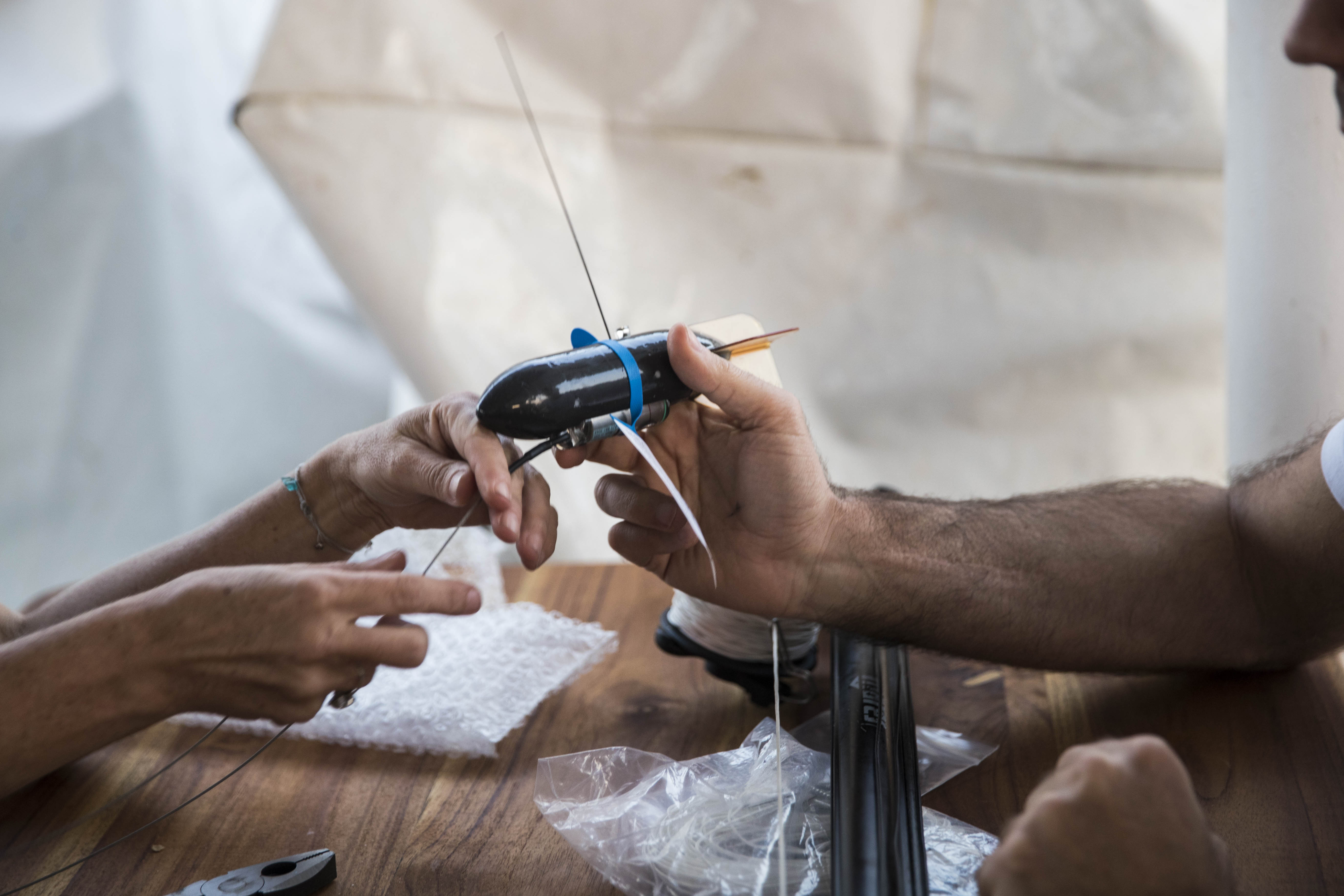
The study of shark movements and reproductive behavior using satellite or acoustic tags.
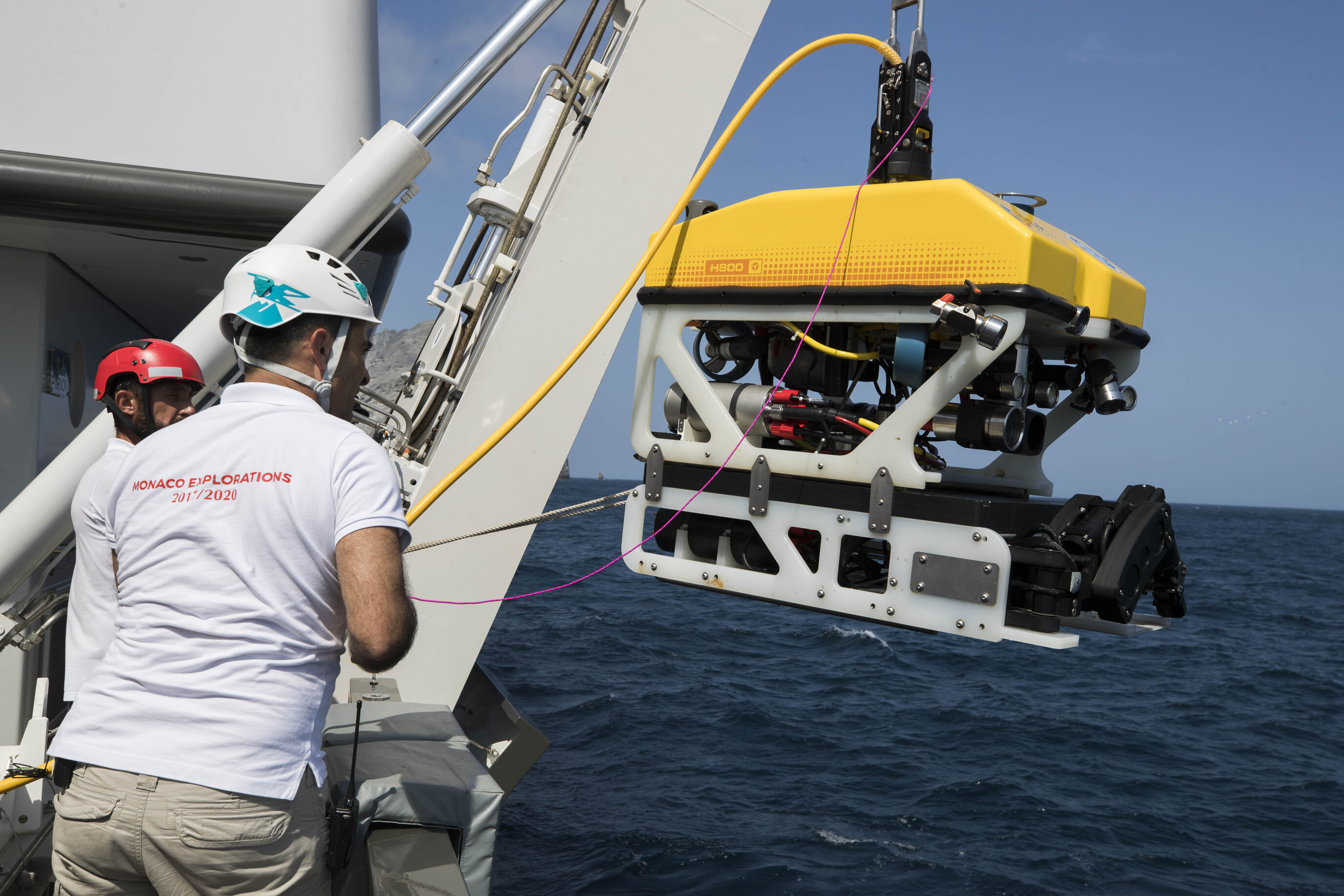
The study of deep-sea biodiversity with an ECA H800 remotely operated underwater vehicle (ROV).
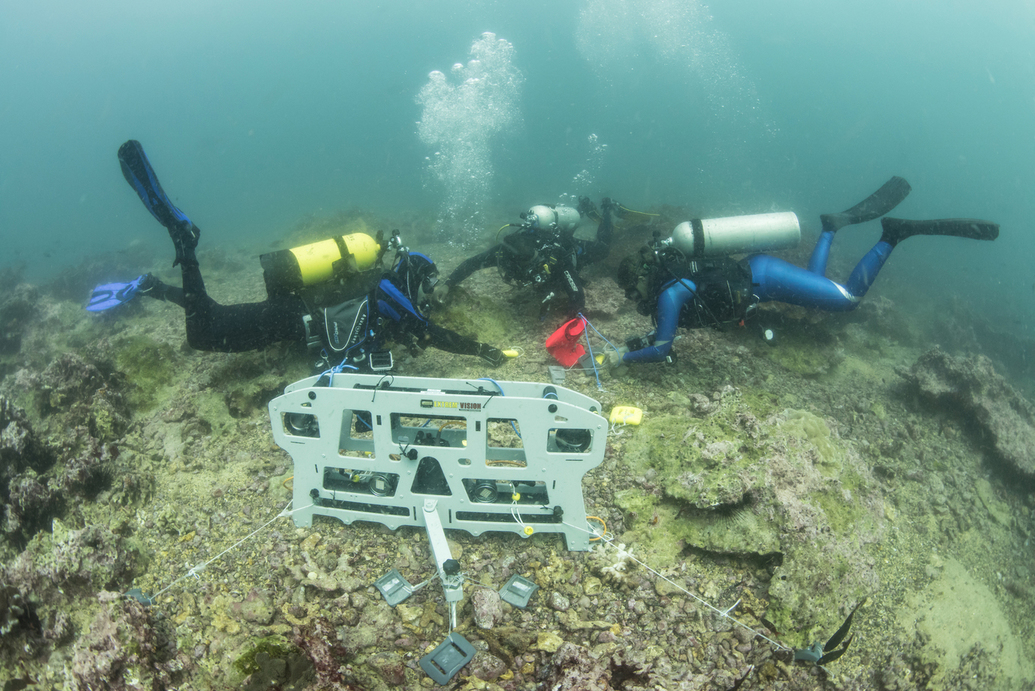
A megafauna census using two complementary techniques: environmental DNA and long-lasting baited cameras.
Shark Island
Malpelo is a 3.5 km2 volcanic islet lost in the middle of the tropical Pacific, 360 km south of Panama and 500 km from the Colombian coast.
A protected marine area since 1995, this 857,465-hectare sanctuary is renowned for its huge gatherings of hammerhead and silky sharks.
Thanks to its unique position in the middle of the ocean, it is home to an abundance of life on land and in the surrounding waters.
H.S.H. Prince Albert II at the side of scientists
H.S.H. the Sovereign Prince made an official visit to Colombia from March 20 to 22.
The visit led to the signing of an agreement reinforcing the partnership between the Principality of Monaco and the Republic of Colombia in the fields of science, oceans and the environment.
At the end of the meeting, H.S.H. the Sovereign Prince came to support the scientists’ work in Malpelo.
He took part in several operations, maintaining an enriching and in-depth dialogue with the teams involved.
If we leave these marine ecosystems alone for a few years, we can see that they regenerate and recover very quickly.
Hence the importance of having as many Marine Protected Areas as possible.
H.S.H. Albert II of Monaco, March 2018.
Preparing the lines for the baited cameras.
© O. Borde
Sandra Bessudo explains to the Prince how the beacons are installed.
© O. Borde
From left to right: Fred Buyle, Sandra Bessudo, HSH Prince Albert II, Pierre Frolla, Robert Calcagno.
© O.Borde
Diving during shark tagging operations.© O.Borde
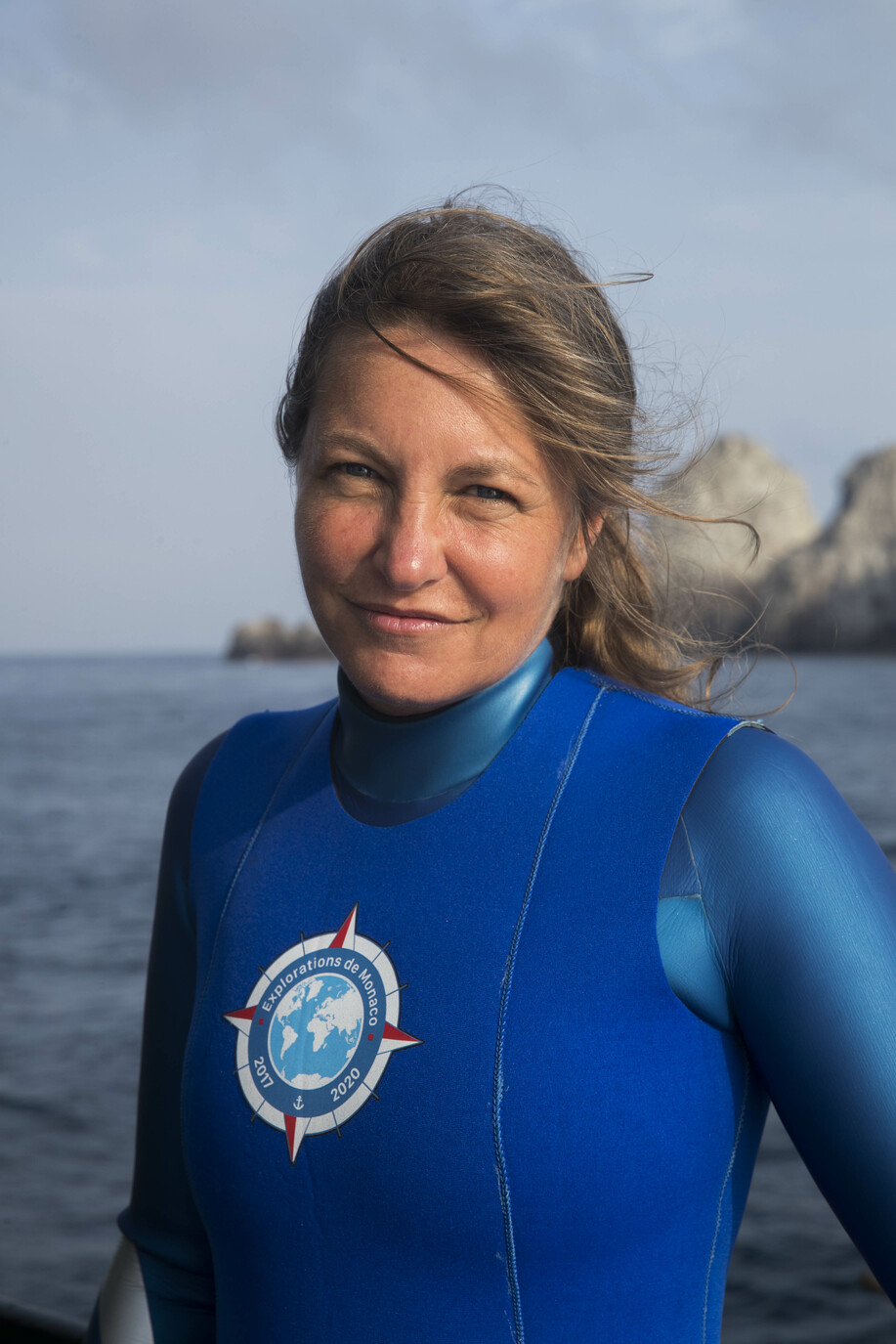
Sandra Bessudo and the Malpelo Foundation and other marine ecosystems
A marine biologist with a passion for scuba diving, French-Colombian Sandra Bessudo has been working to protect Malpelo’s exceptional fauna on a national and international level since 1987.
In 1999, she created a dedicated foundation, the Fundación Malpelo y otros Ecosistemas Marinos. Sandra Bessudo was Colombia’s Minister of the Environment, then advisor to the Colombian Vice-President.
for the Ocean.
In 2014, she was awarded the Grand Medal Albert Ier, mediation section, by the Institut océanographique Fondation Albert Ier, Prince of Monaco.
During the mission, she supervised scientific diving operations, including shark tagging.
The first time I came here, I fell in love with the island straight away, and as I also saw the problems there were, a lot of fishing, that’s when I decided I had to do something to protect this place.
Sandra Bessudo, March 2018.
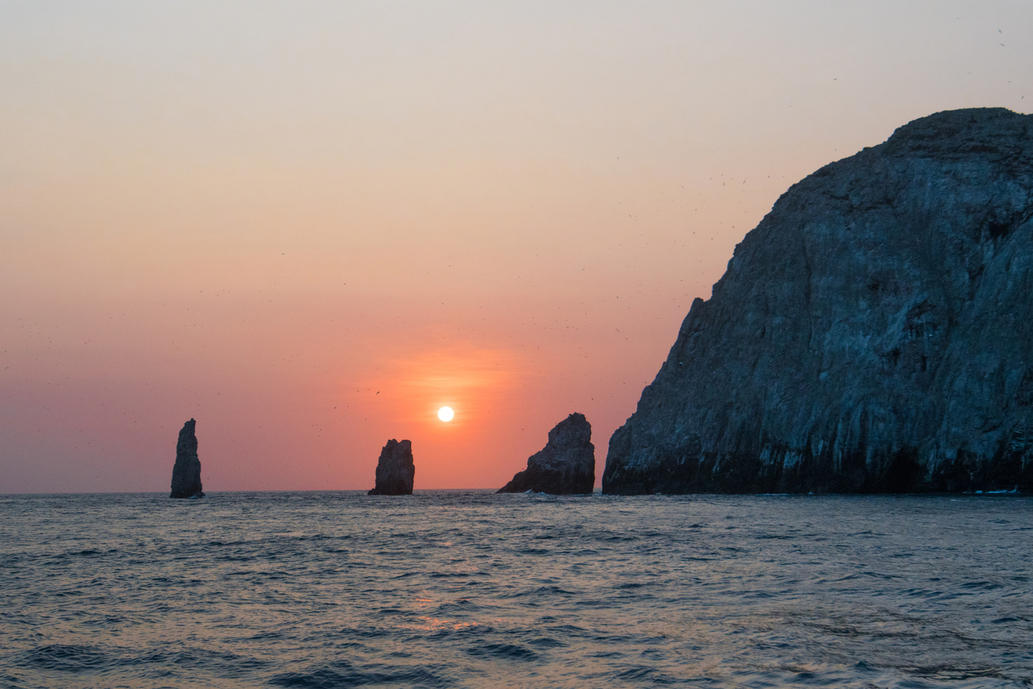
A World Heritage Site
In 2006, Malpelo was declared a World Heritage Site, along with other islets and archipelagos located in the ocean region from the Gulf of California to Ecuador: Cabo Pulmo and the Revillagigedo Islands in Mexico, Coco Island in Costa Rica, Coiba in Panama and the Galapagos Islands in Ecuador.
The universal value of these islands is exceptional, due to their high biodiversity and the unique and irreplaceable marine ecosystems they shelter.
Illegal fishing: an ongoing battle
This exceptional natural site is home to a critically important habitat, including a number of marine species threatened worldwide by overfishing, such as sharks.
Its remoteness from the coast does not protect the site from illegal and intensive fishing.
The vast marine park surrounding Malpelo is the largest no-fishing zone in the eastern tropical Pacific.
However, despite the Colombian government’s surveillance of the site, its fish-rich waters continue to attract a great deal of interest.
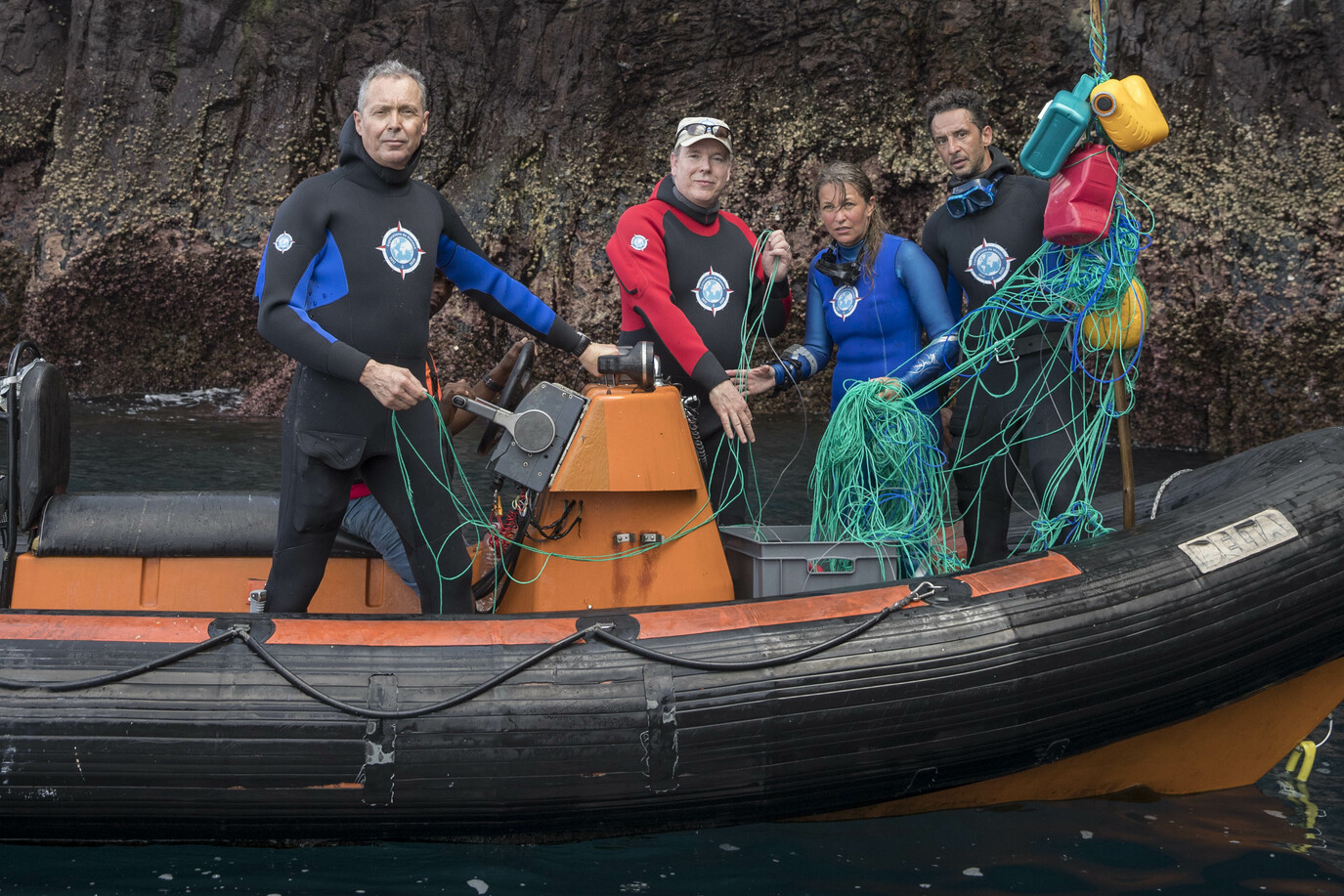
A network at work
As part of the MigraMar network, over 1,000 sharks have been tagged since 2006 in the various islands of the eastern tropical Pacific corridor, including 150 in Malpelo.
During this mission, five pregnant hammerhead sharks were tagged.
Satellite tracking confirms that they are migrating to nursery areas along the Colombian coast.
The information shared and cross-checked between the scientists in the MigraMar network means that actions to protect sharks and other migratory animals can be better targeted.
Shark tagging
Shark movements are tracked by satellite or by acoustic methods, using small transmitting beacons, also known as tags, placed on these large free-diving animals.
For this operation, Sandra Bessudo teamed up with two renowned champions of the discipline, the Monegasque Pierre Frolla and Belgian Frédéric Buyle.
These two freedivers now put their skills and know-how at the service of scientists.
Everything is taken into account at the time of approach and placement to minimize stress to the great sharks.
Some tags are also set by Sandra during scuba diving.
The Eastern Tropical Pacific Marine Corridor
Led by Sandra Bessudo, the MigraMar scientific group studies shark movements between these islands, in what is known as the Eastern Tropical Pacific Marine Corridor.
Tracking the migrations of megafauna – sharks, marine mammals and turtles – is essential to better understand the behavior and breeding grounds of these species, and thus to better protect them.
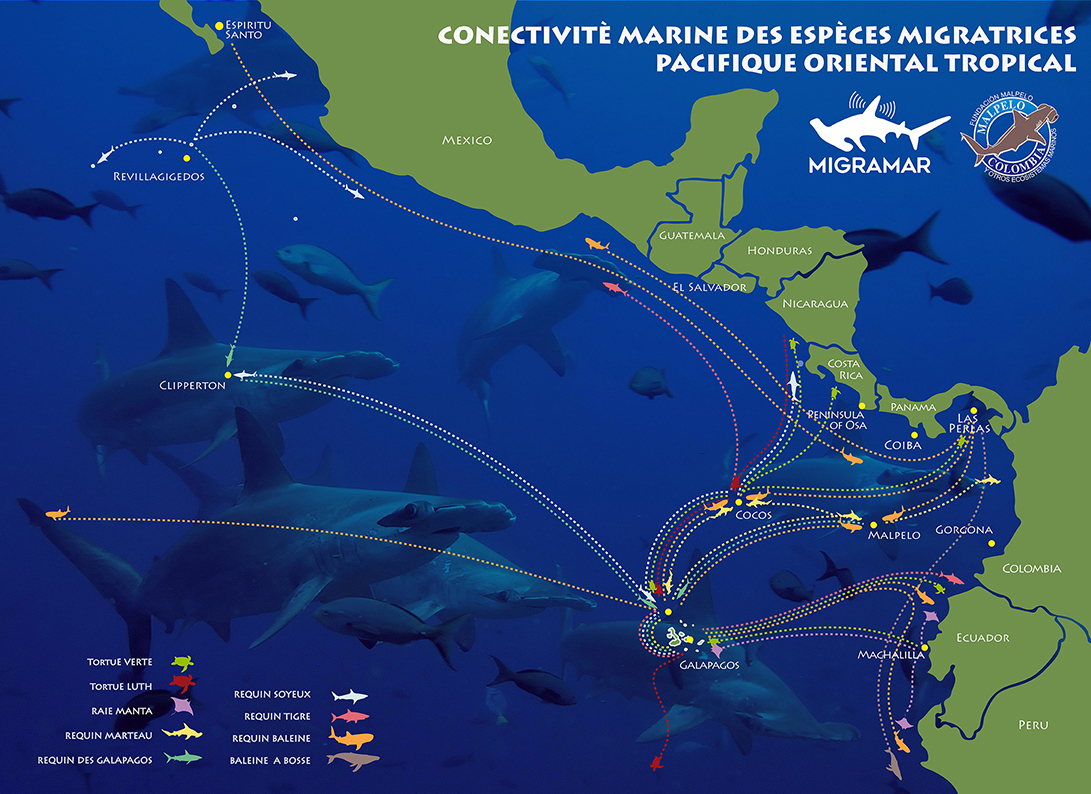
The importance of global protection action
Studies carried out over the last few years have demonstrated the importance of global action.
Migratory species know no borders.
It is therefore of the utmost importance that the conditions for protection are applied to large areas.
This approach is in line with Unesco’s global strategy, whose vision is to recognize and protect sites that are exceptional havens for the coexistence of man and nature.
A ROV for deep-sea exploration
Under the supervision of the Centre Scientifique de Monaco, a ROV H800 underwater robot has been used to explore and survey the deep-sea, bottom-fixed benthic fauna of Malpelo, a hitherto little-studied life whose observation reveals many new species.
Equipped with recording cameras and a sampling arm, it can descend to depths of up to 1,000 meters.
Revealing hidden biodiversity...
Like a fingerprint, DNA reveals the presence of species.
Baited or long-lasting cameras confirm it, but we also find unreferenced species, new species that remain invisible to the eye of the cameras….
The species currently known and recorded at Malpelo are only a small part of the underwater life present on the site.
A real police investigation is underway in all the world’s oceans, using this technique and other complementary tools to take stock of biodiversity.
Environmental DNA: mapping the ocean's megafauna

Thanks to DNA traces in the water, we can track the invisible part of biodiversity for all species, from the microscopic to the megafauna.
On sites that are very isolated from man, such as Malpelo in Colombia, the Galapagos or the scattered islands of the Indian Ocean, we will finally be able to measure the richness of this fauna and therefore of these ecosystems.
All species, even the most furtive, leave a DNA trace that can be collected up to 24 hours after their passage…
David Mouillot, October 2018.
Baited cameras
These cameras, equipped with baits to attract animals, are immersed in the water column at various depths, right down to the bottom.
The Malpelo mission was an opportunity to test and optimize these techniques for identifying underwater fauna.
Like environmental DNA, they have the advantage of being neither invasive nor a source of stress for the animals, especially in areas like Malpelo where wildlife has very little contact with humans.
Long-life recording cameras
The team led by Professor David Mouillot from the University of Montpellier, research director of the MARBEC joint research unit, has also tested the use of cameras capable of recording images continuously for 36 hours.
This system makes it easier to identify and count animals that flee the presence of divers.
All these images are used to cross-reference the results obtained with the environmental DNA technique.
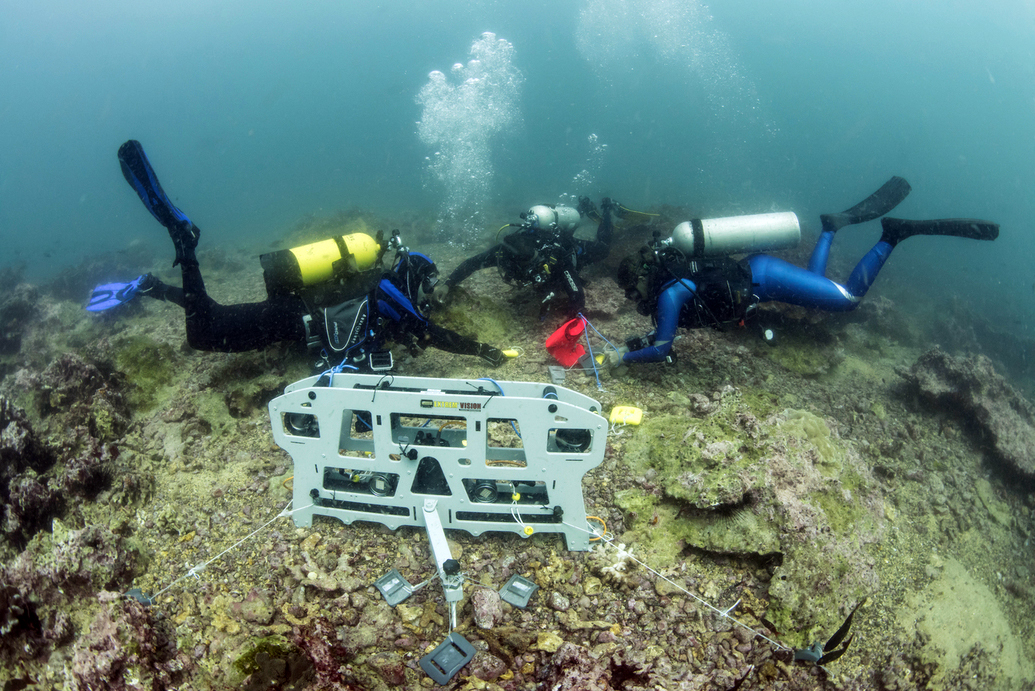
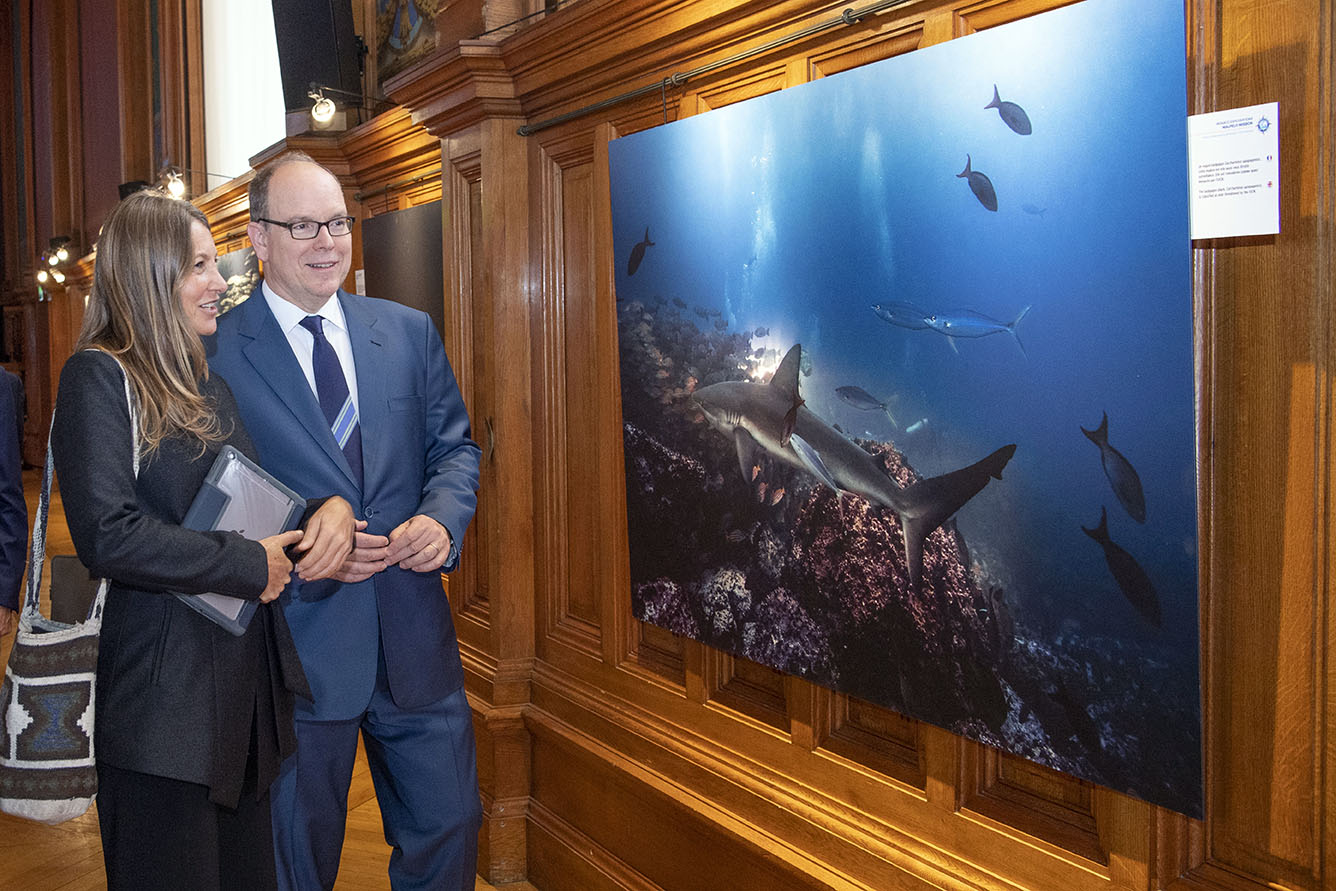
An exhibition and two VR films
The Malpelo mission led to the creation of a photographic exhibition that is available for touring.
It was inaugurated during Monaco Ocean Week on March 25, 2019 at the Monaco Oceanographic Museum.
Two 360° films, entitled L’île aux requins and Enquête en eaux troubles, recount the operations carried out on sharks and on environmental DNA.
These productions are regularly used in school workshops and presented to visitors to the Museum.
Location
The mission day by day: the blog

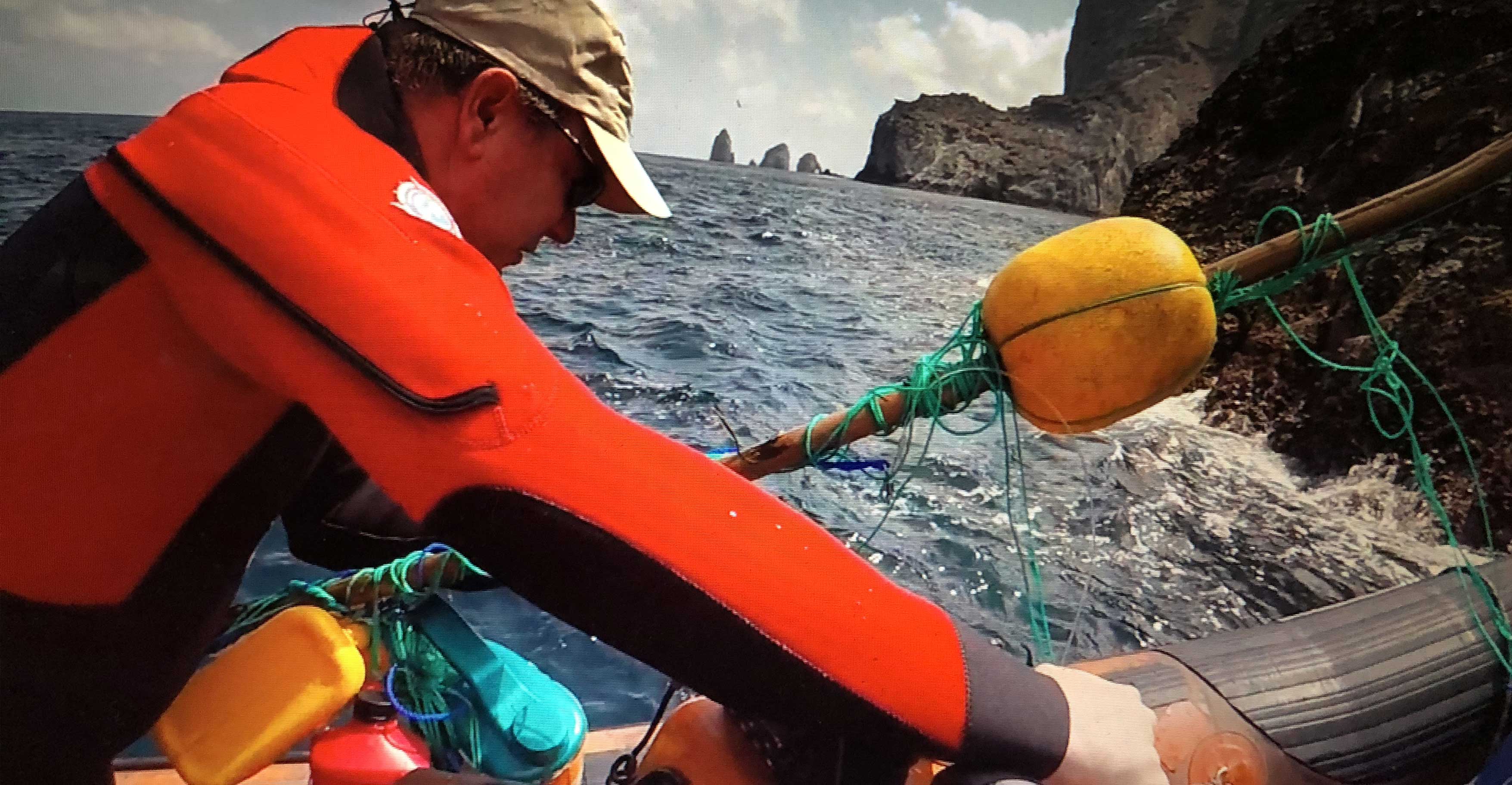
- ·
HSH Prince Albert II in Malpelo
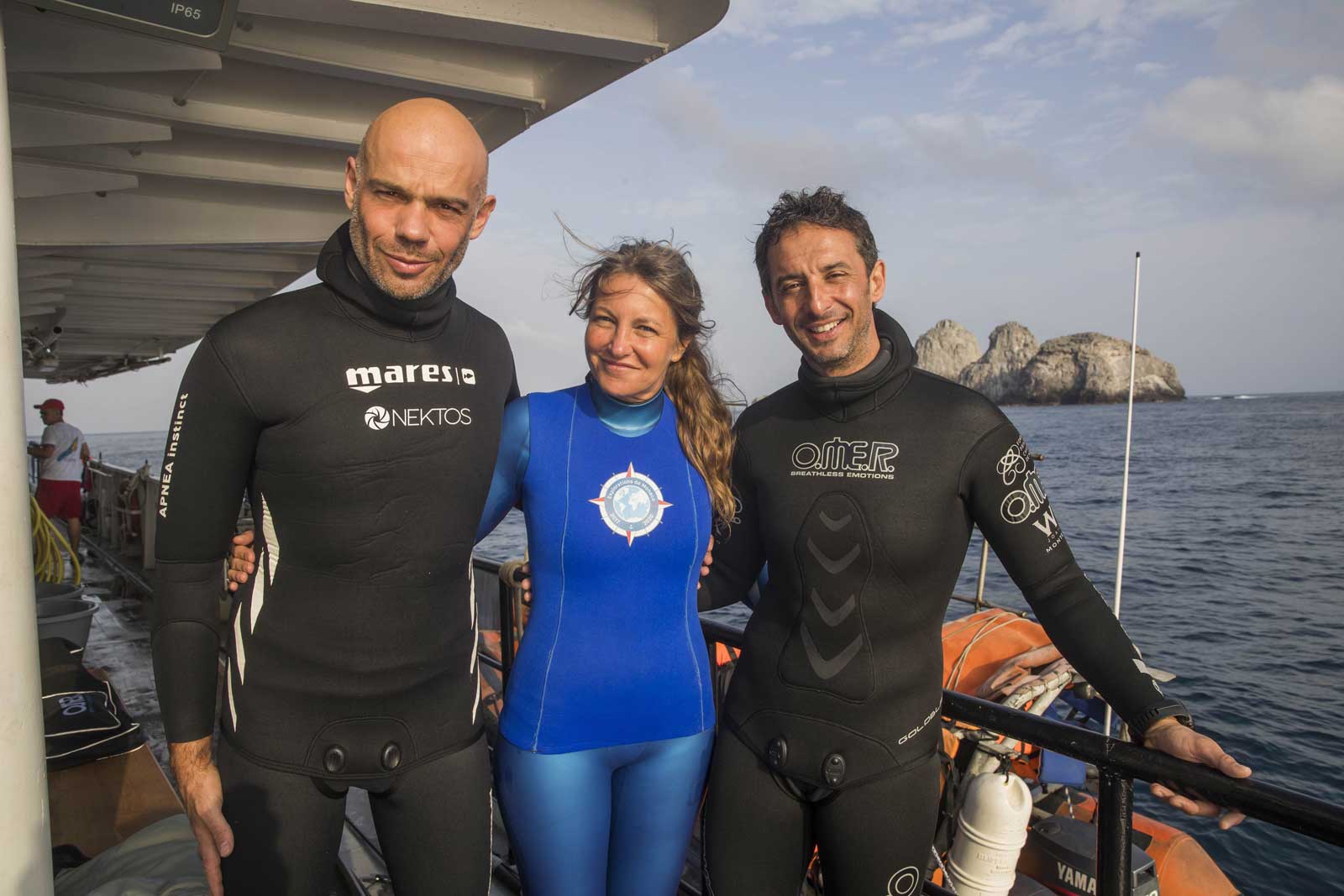
- ·
HSH Prince Albert II in Malpelo, day 3

- ·
Malpelo: HSH Prince Albert Onboard, Day 3


- ·
Malpelo: Team Change
Photo gallery
Malpelo Island.
© O. Borde.
Explorations of Monaco
Sandra Bessudo photographs a school of barracudas.
O.Borde.
Monaco Explorations
School of barracudas.
O.Borde.
Monaco Explorations
Great hammerhead sharks.
© O. Borde.
Monaco Explorations
Eagle ray, Aetobatus, narinari.
O.Borde.
Monaco Explorations
